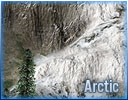
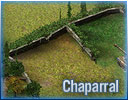
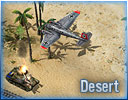
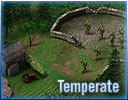
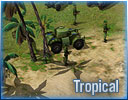
The A&A Terrain system required many tilesets for each of the 5 biomes,
with smaller alpha channel interlocking transition tilesets to go between
the main tiles. In the beginning we were using 256x256 tiles, until
programming constraints forced us to go 128. After A&A was done, we
realized we could have done DXT1 compression and raised the size to 512 or
more.
Since Hindsight is 20/20, if I do terrain again, I will know how to do it better and faster.
The main challenge in doing terrain is the water. I had to animate a bump map applied to a plane in 3DMax for 50 frames, then in photoshop do a progressive blend and brightness contrast over the overlapping frames in order for the water to look right with no fading or popping.